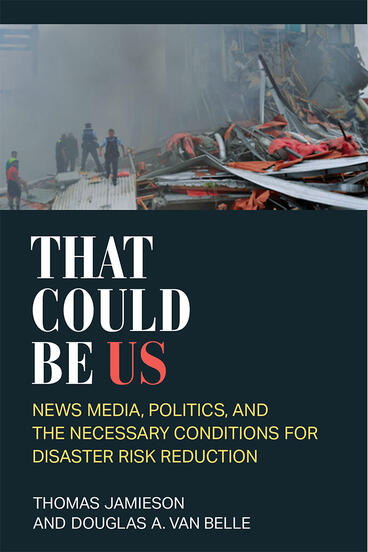That Could Be Us
News Media, Politics, and the Necessary Conditions for Disaster Risk Reduction
The media's role in using disaster relief reduction for political gain
Description
The evidence presented in this book suggests that when the necessary conditions for disaster risk reduction (DRR) are in place, it is possible for elected officials to pursue DRR policies in their rational self-interest. As such, when the media makes it possible through lesson-drawing coverage of distant disasters, DRR policies become much more likely in observing communities because elected officials can seize the opportunity to both make political gains and protect their constituents. Authors Thomas Jamieson and Douglas A. Van Belle provide reasons for optimism about the prospect of DRR in at-risk communities around the world—observing communities are able to learn from the experiences of stricken areas and pursue policies that ultimately save lives and reduce economic damage from disasters.
In That Could Be Us, Jamieson and Van Belle find that the news media delivers information to observing communities in a form that enables learning from other disasters. Experimental evidence shows that people react to this information in a way that would punish leaders who do not back DRR efforts. Case studies, interviews, experiments, and illustrative examples suggest that leaders and political entrepreneurs heed this public demand, react to news media coverage, and act accordingly. Taken as a whole, this suggests that the policy and research implications derived from this book’s theoretical model are worthy of further exploration, particularly in terms of how they might resolve the puzzle presented by the variations in DRR policy uptake around the world that do not seem to be driven by developmental differences across communities.
Thomas Jamieson is Assistant Professor in the School of Public Administration at the University of Nebraska at Omaha.
Douglas A. Van Belle is Senior Lecturer in Media Studies at Victoria University of Wellington.
Reviews
“That Could Be Us offers a fresh take on the impact of newspapers on disaster risk reduction, and tackles an important puzzle: why do disaster stricken communities so often resist formal disaster risk reduction practices when they are shown to reduce disaster losses? This book makes excellent contributions in advancing ideas about how disaster risk reduction lessons are learned.”
- Patrick S. Roberts, RAND
–Patrick S. Roberts, RAND

